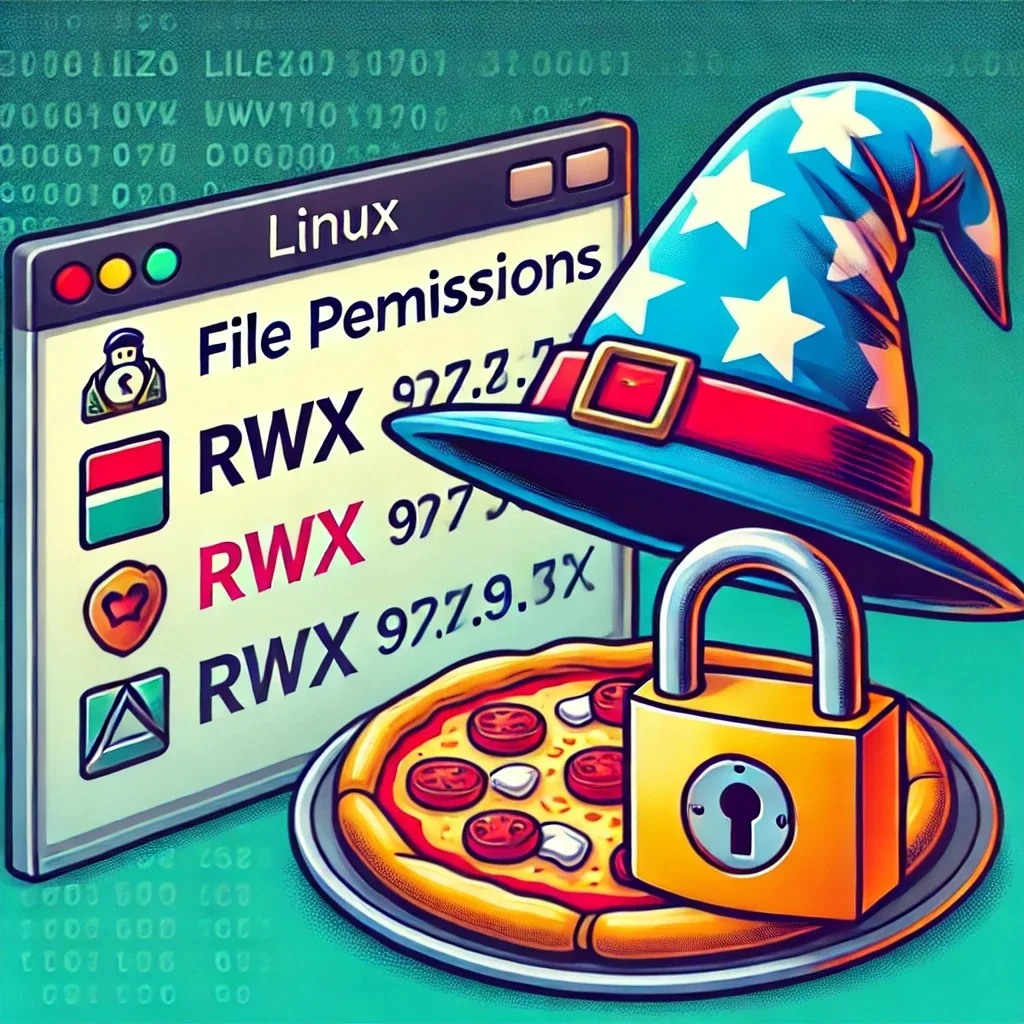
Lesson 2: Mastering File Permissions – Or, How to Lock Your Files Like a Pro Hacker
So, you’ve played around with the Linux Terminal and now you’re feeling a little bit like a wizard. But hold onto your wizard hat, because today we’re diving into file permissions! You’ll learn how to keep your files safe from prying eyes—or open them up for everyone to see, depending on how generous you’re feeling. 😎
What Are File Permissions?
File permissions are like the bouncers at the coolest club in town (your Linux system). They determine who can do what with your files and directories. There are three types of people (or in Linux terms, users) that these bouncers deal with:
- Owner: This is you, the VIP. The person who created the file.
- Group: Your close friends who get to come to the party.
- Others: Those randoms you may or may not let in.
Checking File Permissions: ls -l
Let’s start by checking out the permissions on a file or folder. To do this, you’ll use the ls command again, but this time with a fancy option:
ls -l
You’ll see a bunch of files listed, and something like this:
-rwxr-xr--
Whoa, what is that? It looks like a secret code from the Matrix, but don’t panic! Here’s what it means:
- r = read permission (you can view the file)
- w = write permission (you can edit the file)
- x = execute permission (you can run the file, like a program)
For example, -rwxr-xr-- means:
- The owner can read, write, and execute.
- The group can read and execute.
- Everyone else can only read.
Basically, you’re the boss, your friends can look around, and strangers get to peek in, but not touch.
Changing Permissions: chmod
Now, let’s change the rules with the chmod command. Say you want to give yourself full control (because you’re the star here) and let your friends join the party, but kick out all strangers. Here’s how you do it:
chmod 750 myfile.txt
In this code:
- 7 means you get full permissions (read, write, execute).
- 5 means your group can read and execute.
- 0 means others can’t even look at it.
It’s like setting up a velvet rope around your file. Exclusive access only!
Giving Yourself Permission to Execute: chmod +x
Let’s say you’ve just written a script and you want to run it. But wait—Linux is telling you “Permission Denied”?! How rude. To fix that, you need to give yourself permission to execute the file:
chmod +x myscript.sh
Now, you can run your script like a boss:
./myscript.sh
Boom! Your script is running, and you’re officially a Linux ninja.
Changing Ownership: chown
If you ever want to pass your file to someone else, you can change the ownership with the chown command. Let’s say you want to give your file to your buddy john:
sudo chown john myfile.txt
Now John owns the file, and he can do whatever he wants with it. But, remember—you’re no longer the boss of that file, so be careful who you hand it over to!
Permissions in Real Life
Okay, let’s imagine your file is like a pizza (stay with me here):
- r (read) = You can look at the pizza and smell it, but not touch it.
- w (write) = You can add toppings, eat some slices, or rearrange the pepperoni.
- x (execute) = You can actually serve the pizza, like the chef in your own kitchen.
So, use permissions wisely. You don’t want everyone messing with your pizza, right?
Pro Tip: sudo - Your Ticket to Being the Superuser
If all else fails and the terminal tells you that you don’t have permission for something, use the magic word: sudo.
sudo stands for Super User Do, which basically means “I am the boss now.”
sudo rm myfile.txt
Just be careful—sudo gives you god-like powers. Use it wisely, or you might delete your pizza (and we don’t want that)!
Conclusion
You’ve just learned how to handle file permissions like a true Linux pro! You now know:
- How to check permissions with
ls -l. - How to change them with
chmod. - How to change ownership with
chown. - When to whip out the big guns with
sudo.
Next time someone asks you how to lock down files on a Linux system, you can confidently say, “I got this.”
Stay tuned for the next lesson, where we’ll dive into more Linux magic, because who doesn’t love a good terminal trick?
See also
- Lesson 6 – Event Delegation: Mastering Efficiency in Interaction
- Lesson 5 – Event Magic: Making Web Pages Interactive
- Lesson 4 – DOM Manipulation: Turning the Web into Your Personal Playground
- Lesson 2 – Loops and Conditionals: Making Decisions and Repeating Yourself (Without Going Crazy)
- Unlock the Power of JavaScript – A Beginner’s Journey (No Cape Required)